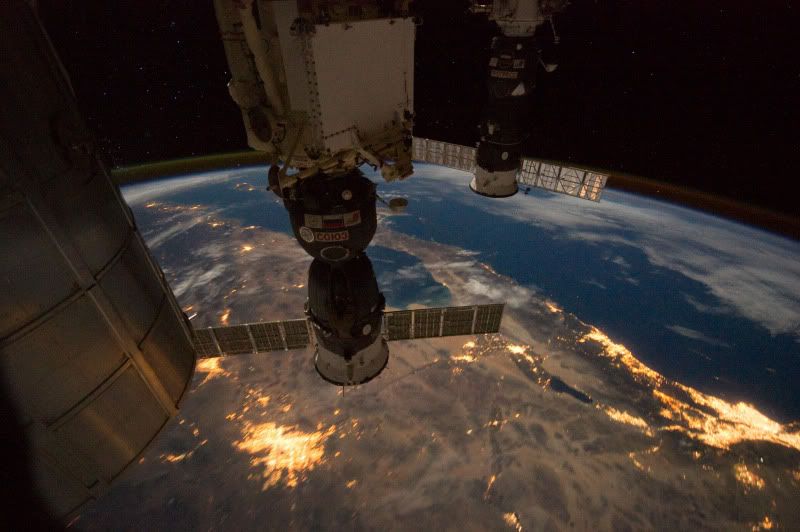Yesterday I shared this picture on Facebook & via Twitter:
I guess it made at least somewhat of a splash because it ended up today in the San Diego Union Tribune newspaper. My point was to show the city lights as a discussion point for light pollution, energy waste, etc. No mention of that made it into the paper, although the reporter did point out that I work for the International Dark-Sky Association.
For those who do not recognize the scene below the International Space Station, the coastlines of southwest California and Baja Mexico are visible as well as (from left to right along the coast) the city lights of Tijuana, San Diego and Orange County. The big city well inland is Phoenix, AZ (South is left of up in this view).
Here is another view that covers some of the same geography, but looking almost 180 degrees in a different direction and without the ISS taking up so much of the frame:
This time the Sea of Cortez is in the lower center, with Baja and the lights of the California cities on the left (North is left of up). Also visible inland (from left to right) are Las Vegas, Phoenix and Tucson. Here's an annotated version to help you find them:
You probably already know the answer to this, but which of these cities have lighting controls? Notice that the lights of Las Vegas look white - they have saturated that portion of the camera's electronic detector. Like everything in Las Vegas, its lights are also famous for being over the top. The light polluting sky glow produced there is visible from hundreds of miles away and proves that what is illuminated in Vegas does not stay there.
The brightest city in Arizona, Phoenix, is bigger than Las Vegas. While it is a very large source of light pollution, notice that its core is not a intensely illuminated as that of Vegas. Tucson is certainly bigger than Vegas, but it is much dimmer. That's the result light pollution controls put in place there. The latest revision of Tucson/Pima County Outdoor Lighting Code was put in place just last week and should help to keep Southern Arizona friendly for astronomy for some time to come.
Can you spot Flagstaff? It became the world's first International Dark-Sky City in 2001. It is smaller than Tucson and has even tighter lighting controls. I believe that you'll find it just to the left of the "P" in Phoenix.
Coming back to California, can you tell which cities have lighting controls? Look at the LA & San Diego areas. There is a difference.



Scott, this is a welcome post and it highlights well the areas that take light pollution seriously, and those that still are clueless about the waste in money and energy their poor lighting practices cause.
ReplyDeleteThanks for posting this.